If you think that running and strength training are opposites, we’re going to change your tune. Endurance training doesn’t mean neglecting your muscles. In fact, quite the opposite. If you want to go the distance on the track, trail, or treadmill, you need strong and stable abdominal muscles.

How do you get there? Sure, you can start with some crunches. But the right core workout — chock-full of core exercises for runners — can get you where you want to go in a hurry. Here are five of our favorite exercises for runners who want to improve core strength. If that sounds like you, you’re in the right place.
5 Best Core Exercises for Runners
Editor’s Note: The content on BarBend is meant to be informative in nature, but it should not be taken as medical advice. When starting a new training regimen and/or diet, it is always a good idea to consult with a trusted medical professional. We are not a medical resource. The opinions and articles on this site are not intended for use as diagnosis, prevention, and/or treatment of health problems. They are not substitutes for consulting a qualified medical professional.
1. Plank
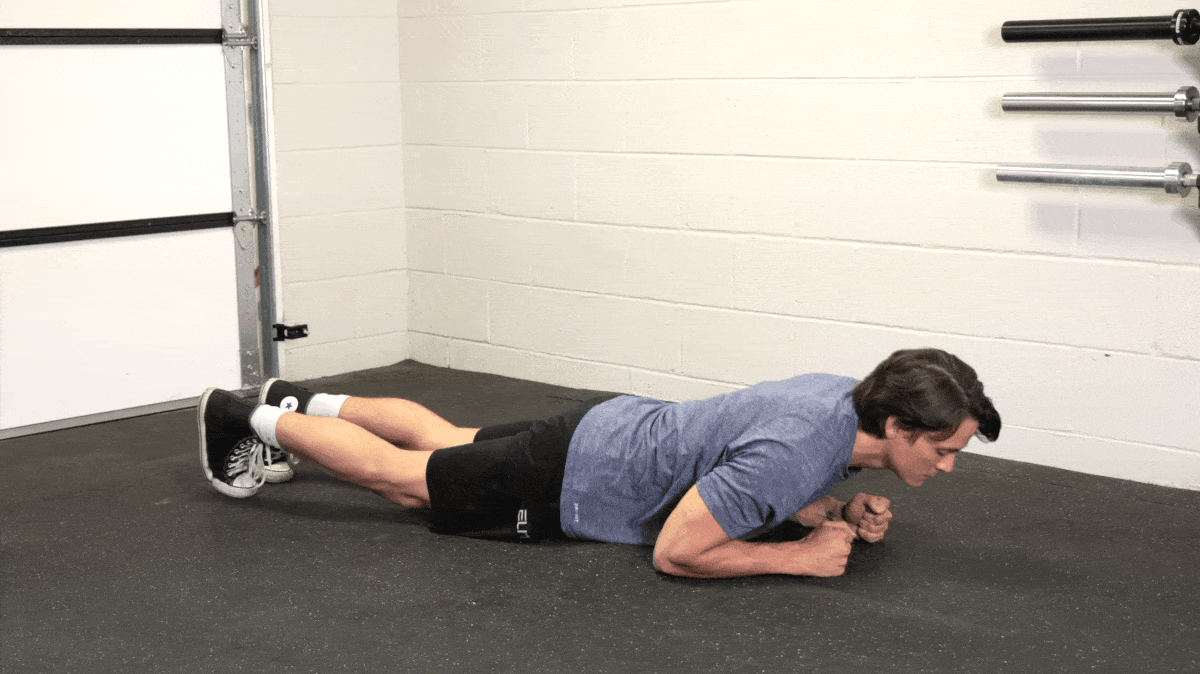
| Equipment Needed | Exercise mat (optional) |
| Muscles Worked | Rectus abdominis, glutes |
| Sets & Reps | 3 x 30-60 seconds |
If you want a strong core, we think there’s no better place to start than with the plank exercise. Planks are a beginner-friendly core movement that will teach you how to stabilize your pelvis, spine, and ribcage. What’s more, you need to master proper breathing while you plank, which should carry over nicely to your running form as well.
How To Do It
- Get into a plank position by dropping down onto your hands and knees. Place your palms on the floor under your shoulders with your elbows locked.
- Straighten your legs out as well and extend your hips. Your body should form a straight line from ankle to shoulder.
- Hold this position by squeezing your behind and bearing down your abs like you’re bracing to be punched in the belly.
Modifications
- Make It Easier: You can do knee planks instead to provide another point of contact closer to your midsection, reducing the force gravity has on your abs.
- Make It Harder: Try the two-point-contact plank. Gently remove one foot and the opposite elbow from the ground and hold them just in the air.
2. Side Plank
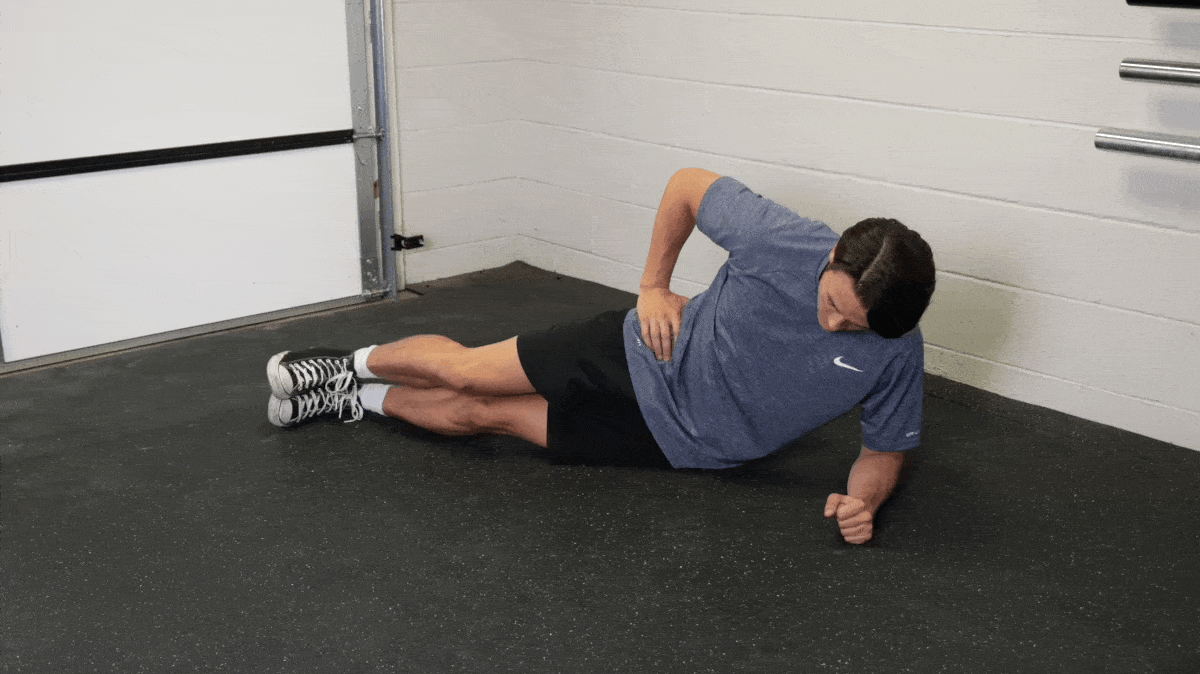
[Read More: The Best Bodyweight Exercises, + Workouts and Tips From a CPT]
| Equipment Needed | Exercise mat (optional) |
| Muscles Worked | External obliques, internal obliques, rectus abdominis, glute medius |
| Sets & Reps | 2-3 x 20-45 seconds |
We’re suckers for side planks around here, and we’ll tell you why. This bodyweight core exercise is fantastic for runners because it works your ab muscles a bit differently. Running applies lots of up-and-down, forward-and-back stress to your abs. Side planks hit your core from the side (duh), helping you identify and attack weaknesses in your core strength from all angles.
How To Do It
- Lie down on one side with your legs straight.
- Prop your torso up by placing your forearm on the ground perpendicular to your body.
- Exhale, brace your abs, and then lift your hips up off the ground until your body forms a straight line.
- Hold this position by pushing your forearm into the ground and squeezing your glutes to keep your hips locked.
Modifications
- Make It Easier: You can do side planks with your knees bent and on the floor to reduce the load on your abs while you learn the technique.
- Make It Harder: Try the Copenhagen plank. This plank variation works your core just like the side plank, but is much harder on your leg muscles as well.
3. Suitcase Carry
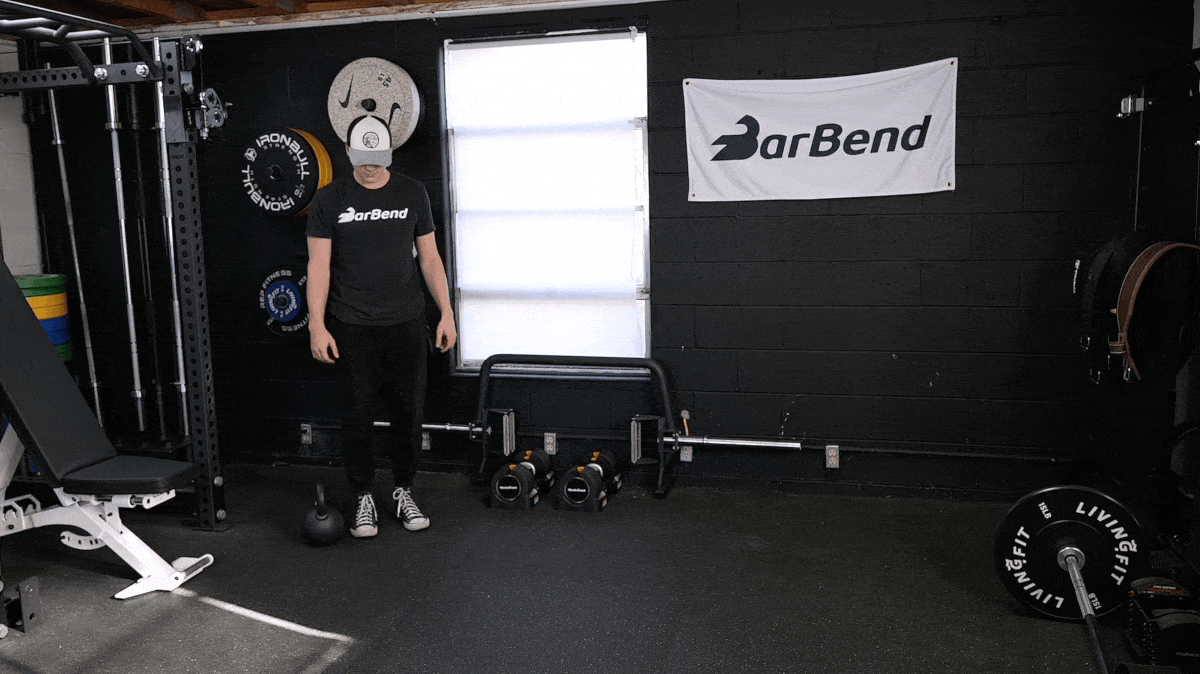
[Read More: Best Kettlebells]
| Equipment Needed | Dumbbell or kettlebell |
| Muscles Worked | Forearms, obliques, rectus abdominis |
| Sets & Reps | 2-4 x 10-20 paces |
Runners need to train their upper body, pelvic floor, lower body, and everything in-between while not straying too far from the goal of running itself. Tall order. We like the suitcase carry because it kind of meets those goals in the middle.
This loaded carry variation will train your core muscles, but it’s also a valuable unilateral exercise that forces you to keep your spine in a straight, rigid position while you walk. Master this movement and you should feel much more solid and stable on your running workouts.
How To Do It
- Grab a hold of a medium-to-heavy dumbbell or kettlebell with one hand and stand up.
- Get tall, pull your shoulders back, and fix your gaze forward.
- Without allowing the weight to pull your shoulder down, brace your abs and take small, controlled steps forward.
Modifications
- Make It Easier: Two-hand carries are actually easier than single-arm carries. Grab two small weights and start there.
- Make It Harder: You can try suitcase carry high knees; instead of taking normal steps, deliberately lift your knee up until your thigh is parallel to the floor as you step.
4. Pallof Press

[Read More: The Best Forearm Exercises for Strength, Plus Workouts]
| Equipment Needed | Cable station or resistance band |
| Muscles Worked | Obliques, rectus abdominis, upper back |
| Sets & Reps | 3 x 12-15 |
Balancing your body is all about training your right side and left side separately — something that’s important for runners and weightlifters alike. To that end, we like the Pallof press. This core workout adds a bit of dynamic motion into the mix so you can build functional strength and, more importantly, train your core to resist unpredictable forces from strong outdoor winds or uneven running trails
How To Do It
- Set an adjustable cable fixture to anywhere between belly button and shoulder height, then hook up your preferred attachment. D-handles and ropes both work.
- Grab the attachment and stand perpendicular to the cable station.
- Take a lateral step to pull the cable taut while extending your arms out in front of you.
- From here, keep your hips square and allow the cable to rotate your torso toward the station.
- When you feel a strong stretch in your abs and hips, reverse the motion.
Modifications
- Make It Easier: Holding the attachment with your arms straight makes this move harder. You can clasp the handle to your chest instead, or bend your elbows a bit.
- Make It Harder: The closer together you place your feet, the less stable you’ll be. For a real challenge, stand with your feet in contact with each other.
5. Mountain Climber
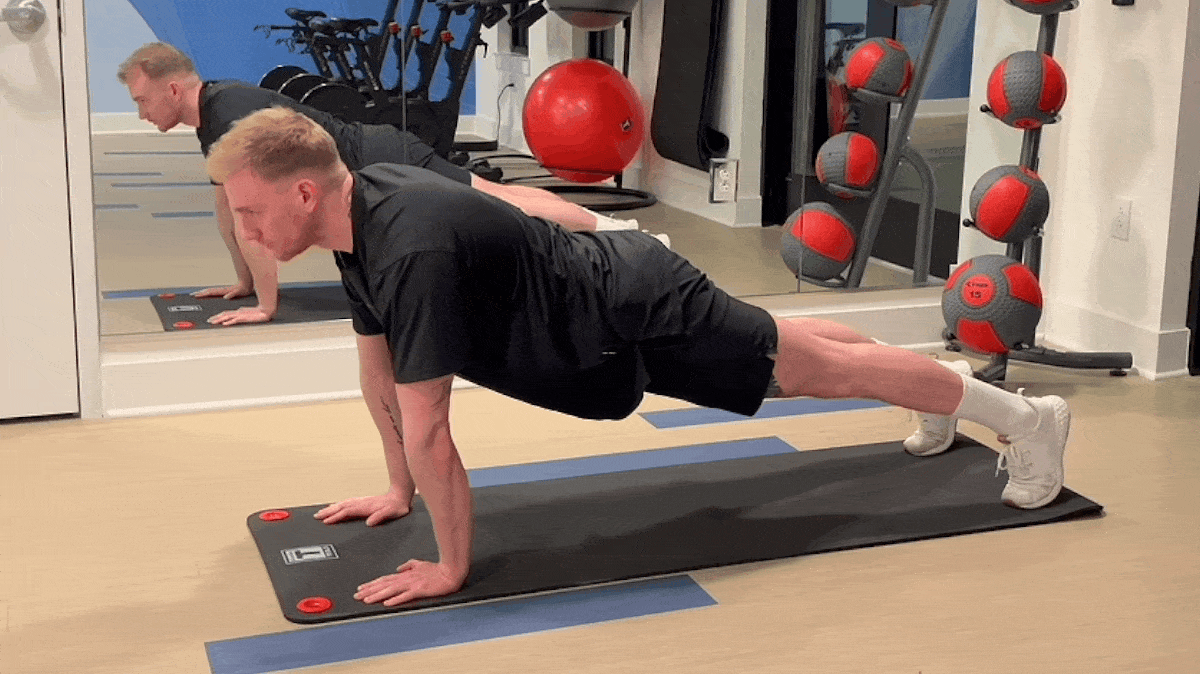
[Read More: The Best Lower Chest Exercises and Workouts for Strength and Muscle Gain]
| Equipment Needed | Exercise mat (optional) |
| Muscles Worked | Rectus abdominis, hip flexors, triceps |
| Sets & Reps | 2 x 20-25 |
Not every core exercise you perform needs to closely approximate your running technique. That said, a portion of your ab workouts for running should mimic your gait to some degree. We like the mountain climber here because it trains both your abs and your hip flexors, which are surprisingly important for running form.
How To Do It
- Assume a push-up position with your hands on the ground, arms locked, and legs rigid.
- From here, brace your core and push your hands into the ground hard.
- Bend one leg and draw your knee up toward your waist.
- Pause for a moment with your knee in contact with your stomach, then place it back where it started. Repeat with the other leg.
Modifications
- Make It Easier: You don’t need to bring your knees all the way up to your ribs. Try just lifting your knee off the ground and see if that provides an appropriate challenge.
- Make It Harder: Limit your ground contact and try to cycle between legs as fast as possible while maintaining good form.
Try This Core Workout for Running
You don’t need to do all these exercises at the same time to reap the benefits of core training. That said, we recommend putting them together in the right order. How? By following along with this core workout, tailor-made to improve your running game:
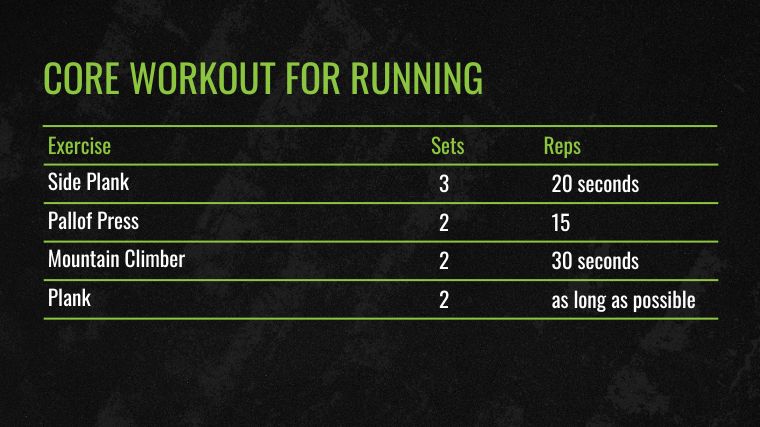
- Side Plank: 3 x 20 seconds
- Pallof Press: 2 x 15
- Mountain Climber: 2 x 30 seconds
- Plank: 2 x as long as possible
Benefits of Training Your Core as a Runner
You might think that, as a runner, you don’t need to do much muscular training, but that couldn’t be farther from the truth. If you want to improve your cardio workout game — whether that’s running, jogging, rucking, swimming, or whatever you prefer — you’ll want to work on your muscular endurance, strength, and even size as well.
Core Training Improves Running Posture
Training your abdominal muscles won’t just make them stronger or more toned. Studies repeatedly show that ab training is integral to sports performance, and running definitely falls under that umbrella. Core workouts improve everything from pelvic alignment to breathing cycles and intra-abdominal pressure. (1)
You’ll Manage Injury Risk
Many core exercises, particularly those that target the “deep” core musculature like your transverse abdominis or internal obliques, can help mitigate your risk of injury as a runner. Common running ailments like tendinopathy, cramping, or even hernias are all things you can mitigate by working your ab, hip and groin muscles both with, or without, weights. (2)
Core Workouts Build Physical Resilience
We tend to think of all our muscles as separate, and physiologically, they are. But your muscular system works synergistically to create movement or provide stability, and nowhere is that more evident than when looking at your core muscles.
[Read More: How to Balance Running and Strength Training, No Matter Your Goals]
By exercising your core beyond its duties during a running workout, you can guarantee that your body is prepared to both produce force efficiently (improving your gait and stride in the process), and be prepared to handle anything that might throw you off-balance mid-run.
What Muscles Make Up the Core
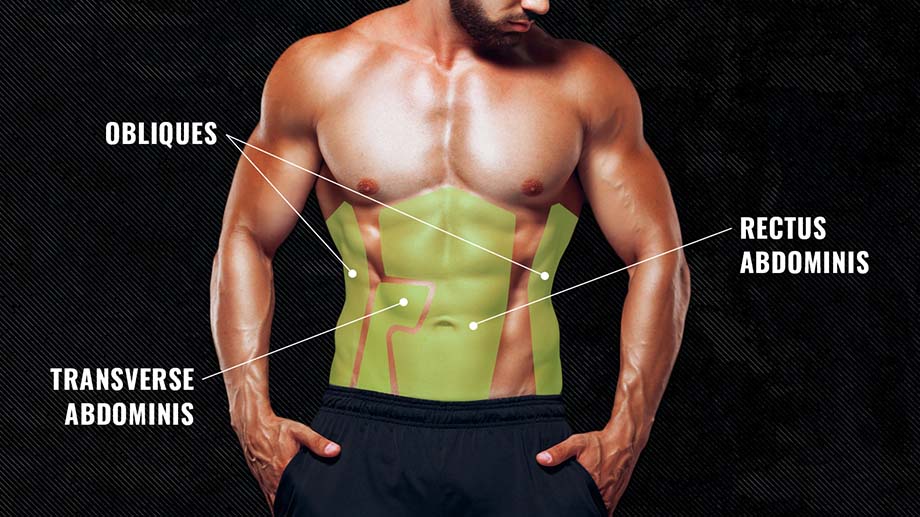
[Read More: The Best Ab Exercises, Plus Ab Workout Routines From a Trainer]
When we say “core,” we don’t just mean your abs — though they’re the central fixture of the area. Core exercise generally refers to training all the major muscles that enwrap your spine in the front, back, and sides. There’s more core muscles than you think, and they all play a role when you run.
- Rectus Abdominis: This long sheet of muscle runs vertically from your ribcage to your pelvis and forms the iconic “six pack”. The main function of the rectus abdominis is to bring your ribs down and stabilize your pelvis.
- Internal & External Obliques: These muscles run diagonally down the sides of your torso. Your obliques work in tandem with your abs to both create and resist lateral, side-to-side, or twisting motions.
- Transverse Abdominis: This deep abdominal muscle plays a vital role in maintaining intra-abdominal pressure by contracting to help you exhale.
- Erector Spinae: Your lower back isn’t challenged too much when you run, but you still need to perform a few lower back exercises from time to time to ensure the area stays strong and healthy.
Frequently Asked Questions
How do I strengthen my core for running?
Runners can follow the same strategies as anyone else when it comes to developing core strength. All you need to do is pick the right exercises and work hard at them a few times a week!
Should runners do core every day?
Probably not. While some core exercises are easier than others, your abs are a muscle group like any other, and they need adequate rest. Stick to working out your core two or three times per week.
Why are core exercises good for running?
You may run with your legs, but your core muscles have an integral job during any running training session. Strong and stable abs, obliques, and even your lower back help keep your torso rigid and upright so you can focus on your stride.
References
- Norris CM. Abdominal muscle training in sport. Br J Sports Med. 1993 Mar;27(1):19-27.
- Abouelnaga WA, Aboelnour NH. Effectiveness of Active Rehabilitation Program on Sports Hernia: Randomized Control Trial. Ann Rehabil Med. 2019 Jun;43(3):305-313.